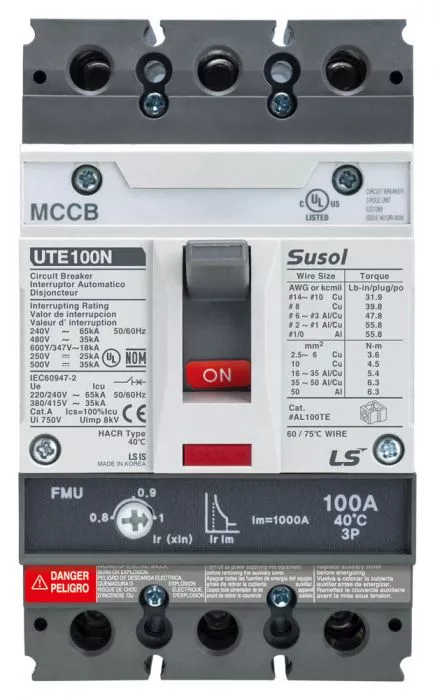Definiton
Rated Service Short-Circuit Breaking Capacity (Ics) represents the maximum fault current the circuit breaker can reliably interrupt multiple times without requiring maintenance.
Derating of the Rated Service Short-Circuit Breaking Capacity (Ics) is necessary under certain conditions that might impact the performance of a low voltage circuit breaker.
Factors Influencing Ics Derating
Here’s a more detailed explanation of Ics derating and the factors influencing it:
- Ambient Temperature
Circuit breakers are typically rated at a standard ambient temperature (e.g., 30°C). If the actual operating temperature is higher, the breaker’s thermal performance can degrade, necessitating a derating of Ics. This is because higher temperatures can affect the materials and components inside the breaker, reducing its ability to handle high currents.
- Altitude
At higher altitudes, the density of air decreases, which affects the cooling capacity and dielectric strength of the air. Reduced cooling capacity means the breaker might overheat more easily, and reduced dielectric strength can affect the breaker's ability to interrupt high currents safely. IEC standards provide specific derating factors for different altitude ranges.
- Duty Cycle
The frequency and duration of the load the circuit breaker handles can impact its Ics. Breakers subjected to frequent short-circuit events may need to be derated to ensure reliable performance over their intended lifespan.
- Environmental Conditions
Humidity, dust, corrosive environments, and other harsh conditions can impact the internal components of the circuit breaker, potentially leading to derating. For instance, high humidity can affect the insulation properties, while dust and corrosive agents can lead to mechanical wear or electrical tracking.
Derating Calculation
- Temperature Derating
Manufacturers provide derating curves or tables that show the reduced Ics values at various ambient temperatures. For example, if a breaker’s Ics is rated at 30kA at 30°C, and the operating temperature is 50°C, the derating factor might reduce the Ics to 25kA.
- Altitude Derating
Similarly, manufacturers provide derating factors for altitude. For example, at 2000 meters above sea level, the derating factor might be 0.9. If the breaker’s Ics is 30kA at sea level, it would be 27kA at 2000 meters (30kA * 0.9).
Practical Example
Consider a circuit breaker with an Ics of 30kA at 30°C and sea level. If it is to be installed at 50°C and 2000 meters altitude.
Assumptions:
Temperature Derating Factor: Assume it is 0.85.
Altitude Derating Factor: Assume it is 0.9.
The derated Ics would be calculated as:

Summary
Derating Ics is crucial for ensuring the reliable and safe operation of circuit breakers under non-standard conditions. By accounting for factors like ambient temperature, altitude, duty cycle, and environmental conditions, the performance of the breaker can be accurately predicted and applied within safe operational limits.
